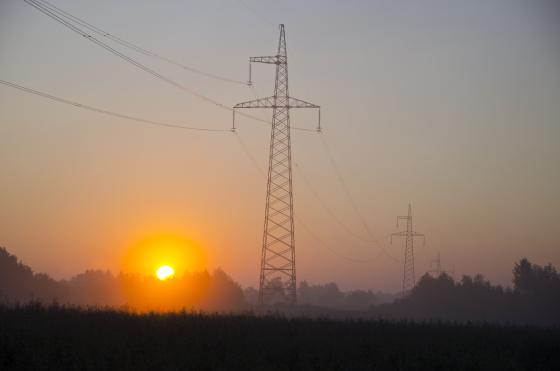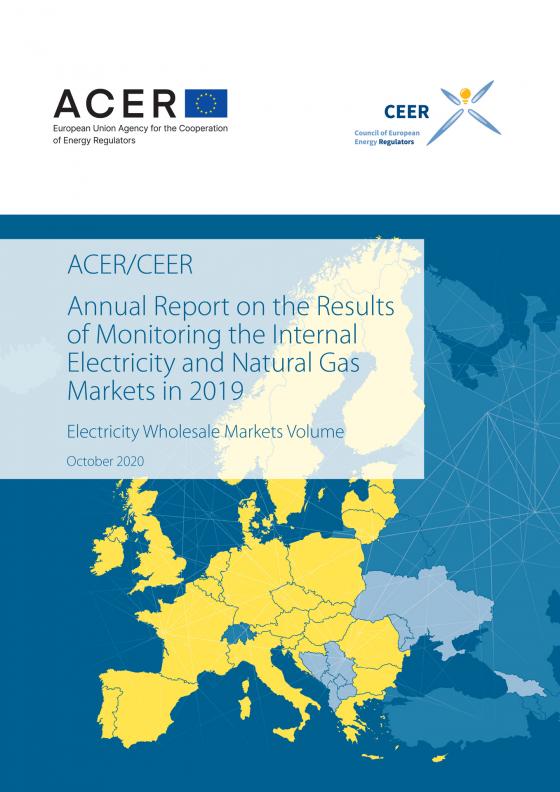Electricity wholesale markets continue to integrate in the EU but cross-border capacity is limited

The new Electricity Wholesale Volume

Electricity price convergence in the EU increased signalling a further integration of electricity wholesale markets; however, the amount of cross-border capacity available for trade among Member States remains insufficient to meet the minimum EU target of 70%. These are some findings of the Electricity Wholesale Markets Volume of the latest report on the results of monitoring the internal electricity and gas markets (MMR) published today by the European Union Agency for the Cooperation of Energy Regulators (ACER) and the Council of European Energy Regulators (CEER).
The report also finds that several Member States continue to use national capacity mechanisms – policy instruments to ensure the necessary level of resource adequacy – even if they do not always face an adequacy problem. The research covers 2019, but it also includes a preliminary assessment of the impact of the COVID-19 pandemic on electricity markets.
The latest edition of the MMR consists of three volumes: Electricity Wholesale; Gas Wholesale; and a combined volume including Retail Markets and Consumer Protection, to be published on 26 October. All volumes can be found here. ACER and CEER develop the MMR with the support of the Energy Community Secretariat.
You can register for a webinar with our experts on the latest MMR results at 10:30 CET on 28 October.
Mixed picture: progress and delays
On the one hand, some progress was observed in several aspects of market integration. For example, in 2019, prices converged fully almost 50% of the time in the so-called Central-West Europe region, including Austria, Belgium, France, Germany, Luxemburg and the Netherlands. Moreover, thanks to the integration of day-ahead markets, cross-border capacity was used efficiently during all hours on more than two thirds of EU borders.
On the other hand, the extension of the flow-based market coupling project to Croatia, Czech Republic, Hungary, Poland, Romania, Slovakia and Slovenia in the so-called Core region has been facing recurrent delays. Accomplishing market coupling in all market timeframes across EU borders would render additional welfare benefits of more than 1.5 billion euros per year.
How is COVID-19 affecting the EU electricity markets?
Electricity demand dropped by 7% in the first half of 2020 compared to 2019 and prices decreased in all EU markets. Despite the pandemic, market integration continued. For example, thanks to the intraday market integration project, intraday liquidity increased by more than 25% compared to the same period of 2019. The use of renewable energy accounted for 40% of the generation mix in the EU in the first half of 2020 and for the first time surpassed the share of fossil fuels in the generation mix.
Some of the main challenges: A more coordinated approach to ensure security of supply and sufficient cross-border capacity
Electricity systems are facing unprecedented changes, and achieving the desired levels of security of supply at a low cost for end-consumers is essential. Capacity mechanisms remain in several Member States with a total cost of 3.9 billion euros, representing a 73% increase in 2019 compared to 2018.
ACER acknowledges that these mechanisms may contribute to ensuring security of supply but recommends that Member States implement them based on a robust and coordinated resource adequacy assessment.
Another remarkable challenge refers to the amount of cross-border capacity available for trade, which continues to be insufficient. ACER will soon publish a dedicated report on the issue, in view of the 70% capacity target envisaged in the Clean Energy Package (CEP), covering the first semester of 2020.
The CEP offers a portfolio of instruments to achieve the 70% target. In the short term, Member States may opt for transitory measures, such as derogations or action plans, apply remedial actions like redispatching and countertrading, or improve the configuration of bidding zones. In the long term, Member States may expand or reinforce networks. In this respect, ACER is currently involved in two of these instruments. In particular, ACER is in the process of approving a number of regional methodologies for coordinated redispatching and countertrading and is assessing the methodology, assumptions and alternative bidding zone configurations to be considered for the bidding zone review.


